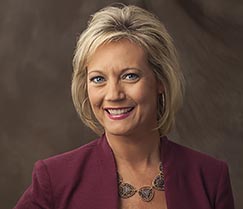Our intense focus on patient experience yields positive results
by Melissa Owens, MSN, Chief Nursing Officer, VP of Patient Care Services, Southeast Health
 There are currently 5,500 hospitals in the United States. Our leadership team has set our sights on becoming one of the Top 100 hospitals nationally for the care and service we provide (currently there are no hospitals in the state of Alabama on the Top 100 list). Accomplishing this goal will take time, resources and commitment from the entire Southeast Health team.
There are currently 5,500 hospitals in the United States. Our leadership team has set our sights on becoming one of the Top 100 hospitals nationally for the care and service we provide (currently there are no hospitals in the state of Alabama on the Top 100 list). Accomplishing this goal will take time, resources and commitment from the entire Southeast Health team.
High performance in patient satisfaction is one of the criteria in measuring top hospitals. Standardized surveys are used nationwide to measure patient satisfaction with hospital care. The survey contains 21 patient rating categories with 11 key areas such as communication with doctors, communication with nurses and responsiveness of hospital staff. During the past year, we have successfully moved our patient satisfaction indicators in a positive direction.
We have been systematically implementing processes and proven best practices to improve the patient experience. If you visit our main campus, you are likely to notice some significant changes in both the physical environment and our culture.
For example, we now have a patient-centered visitation policy in the Critical Care Units. Gone are the days where families were relegated to the CCU waiting room until the appropriate hour to visit their loved one. Today we have open visitation and encourage loved ones to remain with their family member. This change has not only improved the patient and family experience, but it also allows for family involvement, which has a positive impact on quality.
We have also increased accountability and require our leaders to inspect what they expect. Every patient who stays in the hospital overnight will be visited by a nursing manager or leader during his/her stay. Receiving direct feedback from patients improves communication and helps us proactively manage concerns.
We also have weekly accountability meetings, where we review all patient satisfaction scores and comments. This focused effort helps us monitor our results and our action plan. In October, we received and reviewed 140 surveys. While most patient comments are positive, they also notify us of an issue or problem that can usually be easily corrected.
Every day the technologies we use at work, home, in our automobiles and elsewhere are becoming more sophisticated. And while these advancements make our lives more efficient, we are reminded that maintaining personal face-to-face connections becomes even more important. This is certainly true for the nurse and patient relationship.
We have made a commitment to create a positive nursing work environment by reducing the nurse-to-patient ratio on our medical/surgical units. When fully implemented, this will provide nurses more time at the bedside, which correlates to an improved patient experience.
Patient satisfaction measures related to nursing communication have improved as we have implemented hourly rounding. This is the practice of checking on patients every hour during the day and every other hour at night. The increased presence at the bedside helps the care team anticipate the needs of a patient, which correlates to fewer urgent calls to the nurse’s station and improved communication.
Another means of communication with patients and families is the use of white boards in patient rooms. Nurses, physicians and others can provide information to their co-workers, as well as patients’ family members, by leaving messages on these boards. A white board is a simple and effective communication tool.
Achieving excellent results in patient satisfaction is a team effort. Every indicator we are measuring – from room cleanliness to staff responsiveness – is moving in the right direction. And I am pleased to share that our most recent internal survey data shows that we are meeting our targets and moving towards our goal of 90th percentile performance in every area. However, when it comes to patient satisfaction, our work will never be complete. We can always do more and we will.
Our commitment is that we will continue to invest in our facilities and our staff to ensure patients and families have a positive experience while in our care. Thank you for continuing to entrust your care to us at Southeast Health – we’re getting better every day just for you.
______________________________________________
This is part of an ongoing series covering the impact of changes in healthcare in our region.

